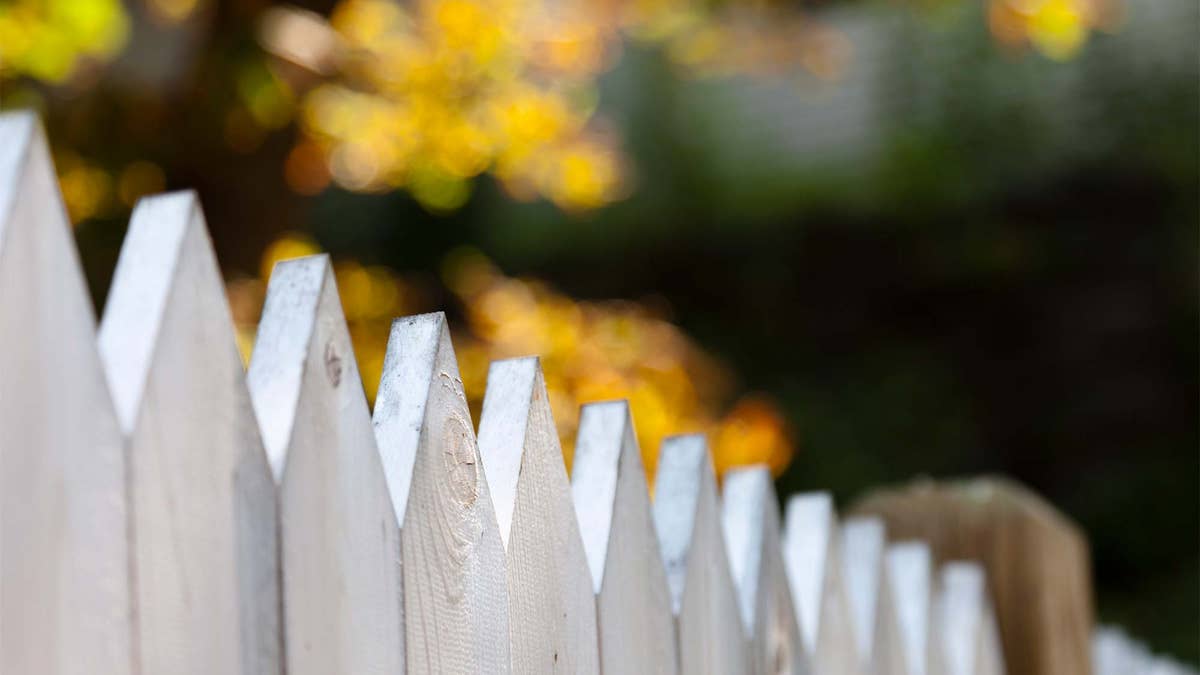
how to build a fence without ending up in neighbor feud (Timothy Masters)
Good fences make good neighbors, but how do you make a good fence, exactly? After all, it's not just a question of marking the division between two pieces of property. Do you and your neighbor both have a say on the height, style, and color -- and should you split the costs evenly?
If you're facing any of these questions as you contemplate some fence work, read on.
Does your neighbor have a say on your fence?
Whether your neighbor can weigh in depends largely on where you live, according to Marc Markel of Roberts Markel Weinberg Butler Hailey in Texas. Laws and regulations vary by state: In California, for instance, the "good neighbor fence" law requires neighbors to split the cost evenly.
To find your own local regulations, search online for "fence permit" along with your county and/or state. You can also visit statelocalgov.net: Click on your state and county to get to your local government's website, where you can find info on fence permits or a phone number under "planning and zoning" to get your questions answered.
Fences may also be regulated by a homeowners association and/or your home's restrictive covenant, which is typically found in your property deed and states how your land can be used.
For example, the height limit for fences is typically 6 feet for back and side fences and 4 feet for front-yard fences. Some covenants will spell out how repairs and new fences should be handled between neighbors -- even if you build the fence entirely on your own property -- while others will not. If there are no stated restrictions, then it's basically up to you and your neighbor to work it out together, hopefully in a friendly manner.
David Reiss, a professor at Brooklyn Law School, says it's always best to get your neighbor's input rather than just forging ahead. In the best-case scenario, "they may volunteer to share the cost 50-50," he points out. Plus, there may be aesthetic issues to discuss: "Do you save money by installing a cheaper fence with a front and a back, or do you spend more money and get a fence that looks good on both sides?"
Your neighbors may have strong feelings about these issues. It's better to hear them out sooner rather than later.
On whose property should you build the fence?
If your HOA or restricted covenant doesn't specify where a new fence must be built, Thomas Vetter, operations manager of Jan Fence in Pequannock, NJ, says you're always better off building your own fence on your own property rather than negotiating with a neighbor, which may lead to liability problems down the road. He also cautions against letting your neighbor build a fence on your property.
"Once something is built on your property, it is your responsibility," Vetter says. That means if the fence needs repairs down the road, you may be responsible, even if you didn't want the fence in the first place.
Or if you really want to build the fence right on the property line (because your yard is small enough as it is, for instance), Markel warns, "You do not have a right to place a fence there without their consent." He also cautions that most property lines aren't straight, and contain curves and turns that may make fence placement even trickier.
Your best bet is to have a surveyor come out and put pins in the ground to show where that property line is -- and to get your neighbor's consent, in writing, to build there. Have the contract with the fence builder signed by both property owners as an extra safeguard.
Who pays for the fence and repairs?
When it comes to repairs for fences built on property lines, in general both parties are responsible for keeping the fence in good shape and should split the costs equally. Of course, neighbors don't always see eye to eye on when repairs are needed. Some states and HOAs have stiff penalties for those who won't contribute their share of the upkeep, but otherwise it's up to homeowners to work it out on their own.
If you're building a fence entirely on your property, however, that means the cost of building and maintaining it will fall solely to you -- unless your neighbor wants to contribute out of goodwill. That doesn't mean you can build whatever you want, however. Beyond any municipality or HOA rules, a neighbor could have your fence deemed a nuisance by a court (say, if you painted a mural on the side that faces their house) and you could be penalized and/or have to change the fence.
Even if the neighbors aren't going to participate in the building or repairing of a fence, Markel recommends letting them know about your intentions so that if, say, you remove or repair the fence, you don't accidentally put their pets in an unsecured space. Also, they may have something attached to the fence on their side, such as vines, that could be harmed by your actions. And since no one wants irate neighbors at their door, your best bet is always to clue them in.